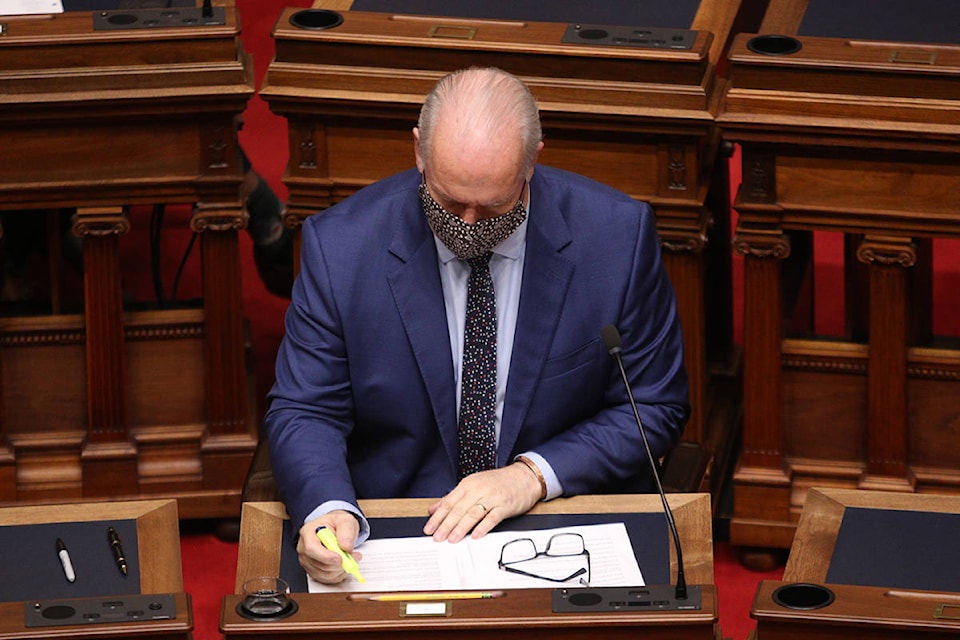The 2021 provincial budget tabled last month allows us to gain additional insight into how COVID-19 has affected the economy and the B.C. governmentÔÇÖs finances. After digesting the economic and fiscal information presented in the budget, three main takeaways stood out for me.
The first is that our economy has staged an pretty decent revival from the COVID-driven carnage of last spring. For example, retail sales are 12 per cent above the level set in February 2020. Housing markets are on fire, with dramatic increases in sales activity and recent advances in housing starts.
Manufacturing shipments have jumped after a temporary drop in the first half of 2020. The provinceÔÇÖs burgeoning advanced technology sector is booming. And the natural resource sector ÔÇô consisting of forestry, energy, mining and agri-food ÔÇô is benefitting from buoyant world commodity markets and making a vital contribution to the provinceÔÇÖs ongoing economic recovery.
Perhaps most notable is whatÔÇÖs happened in the labour market since last spring. B.C. has recouped the bulk of the 400,000 jobs lost during the harrowing months of February-April 2020. By March 2021, total employment was higher than 13 months earlier.
However, last month saw a steep job decline, as the ÔÇ£circuit breakerÔÇØ restrictions introduced by health authorities in March took a toll on industries like tourism, hospitality, accommodation, transportation, and arts and entertainment. Many workers in these industries are still furloughed.
Moreover, employment growth in the broad public sector has surged, partially offsetting weaker job growth across some parts of the private sector. There is still a way to go to get back to something resembling full employment in the business community.
Still, overall British Columbians can take comfort that a resilient economy managed to spring back to life once the first wave of COVID-19 had passed and has mostly stayed on a growth track since then.
A second important budget takeaway is the deterioration in the provinceÔÇÖs financial health since 2019. This has two implications. First, the B.C. government, saddled with significantly more debt thanks to the pandemic, will have less scope to deal with future economic shocks. And second, once the pandemic is over, some combination of spending restraint and tax hikes likely will be required to repair the fiscal damage done by COVID-19.
The good news is that higher-than-expected revenues fueled by a rebounding economy enabled the government to run a smaller deficit in 2020-21 than many ÔÇô including the Ministry of Finance ÔÇö were forecasting.
Instead of the $13 billion gusher of red ink anticipated last fall, the shortfall came to $8.1 billion for the year ending March 31, 2021. On top that, the province borrowed another $6.3 billion to fund taxpayer-supported capital spending. Adding this to the operating deficit, B.C.ÔÇÖs total taxpayer-supported debt climbed by roughly $14 billion ÔÇô a record amount of new debt ÔÇö in 2020-21, lifting the net debt/GDP ratio a full five percentage points to 20.3 per cent.
Surprisingly, the Horgan government is projecting an even bigger operating deficit of $9.8 billion this year, along with another $8.5 billion in borrowing for taxpayer-supported capital projects ÔÇô pushing the net debt/GDP ratio to 23 per cent by March 2022.
The decision to run another large deficit in part reflects the reality that the COVID public health crisis ÔÇô and the associated economic disruption ÔÇö is still with us. But the government has also given itself a fiscal cushion by including substantial forecast allowances and other contingencies in its budget projections. Given the multiple nasty surprises delivered by the virus over the past year, that seems prudent.
The final budget takeaway is that the province has more work to do to establish conditions that will support a strong, productive economy.
To be sure, a few measures unveiled in Budget 2021 should be positive for private sector investment and job creation going forward ÔÇô including temporary sales tax exemptions for business purchases of machinery and equipment, additional funding for post-secondary education and training, and the creation of a new Crown agency with a mandate to invest in promising local companies.
But there is little in the budget that addresses the policy-driven barriers to investment in some of the provinceÔÇÖs biggest export industries ÔÇô advanced manufacturing, forestry, and mining.
Nor is there much focus on leveraging B.C.ÔÇÖs strengths in high technology industries like life sciences, biopharmaceuticals, and digital goods and services. Looking past the pandemic, B.C. policymakers will need to turn their attention to improving the provinceÔÇÖs mediocre performance in the critical areas of productivity, innovation and competitiveness.
Jock Finlayson is a senior policy advisor with the B.C. business council.
Like us on and follow us on .
Want to support local journalism? Make a donation



